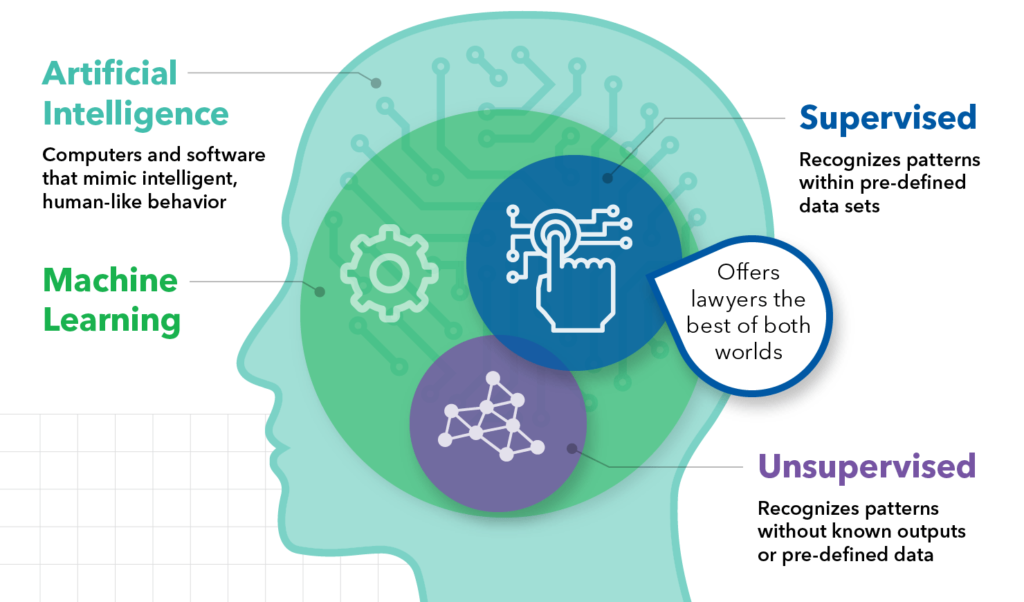
Demystifying Artificial Intelligence For Lawyers: Supervised Machine Learning
By David Kleiman, Product Manager at Bloomberg Law
For many, artificial intelligence (AI) conjures images of robots taking over the world; a ‘Jetsons-like’ or ‘Terminator-like’ world where robots rule every corner of our lives. The reality is that the adoption of AI is much more subtle.
In fact, AI has already infiltrated many aspects of our lives. For example, if you have ever used Siri, Alexa, or conducted a Google search, you have used AI. If you have ever received recommended products or services based on past purchasing or browsing history, you have used AI. If you ever used a spam filter, you have used a form of AI. The list can go on and on.
When AI is viewed through the lenses of already accepted consumer uses, the fear and uncertainty of AI in the legal space starts to dissipate.
The truth is, AI in the legal space is not scary. It is a natural progression in the modern-day, technology-driven world. When properly deployed and understood, AI can help lawyers make informed, data-driven decisions and improve their efficiency. However, what can be overwhelming and scary is the jargon and varying definitions of AI that have permeated the legal industry.
To that end, this article is meant to help lawyers cut through the jargon and provide a better understanding of what the application of AI actually means in the legal space.
Focusing on What Matters
While there is no shortage of AI-related terms being tossed around such as machine learning, deep learning, natural processing language, probabilistic reasoning, question answering and many more, when it comes to the legal industry, supervised machine learning should be the focus.
In its simplest form, AI is the overarching description for technologies that use computers and software to create intelligent, human-like behavior. The value in AI is its ability to analyze massive amounts of data and unearth details that are undetectable to the human eye.
Yet without human expertise ensuring the quality and accuracy of that data, AI can do more harm than good. For lawyers, the most successful uses of AI utilize both technology and human expertise. That is where machine learning, specifically, supervised machine learning, comes in.
Supervised machine learning is a type of AI in which computers seek and recognize patterns within pre-defined data sets. These data sets are typically created by human domain experts, which act as guidance counselors of sorts to the machines.
As an example, leveraging expertise from Bloomberg Law’s legal team, Bloomberg Law’s Smart Code (SM) combines advanced supervised machine learning to identify sections of court opinions that reference various laws, rules, and regulations.
Using what it has ‘learned’ from the data sets reviewed by human experts, the software assigns a rating of strong, medium or weak to each court opinion’s discussion of the law, thereby enabling lawyers to separate the wheat from the chaff, so to speak, and find the most relevant legal discussions faster than ever before.

Surfacing the Right Information
Bloomberg Law’s Points of Law feature is another example of how supervised machine learning can enhance a lawyer’s efficiency. Guided by learnings from human created data sets, Points of Law is able to extract all of the important and relevant legal principles contained in court opinions. This helps legal researchers unearth new relevant documents and more easily identify similarities between court opinions.
Covering millions of court opinions, this application of AI can minimize the number of errors in the research process and help an attorney avoid missing important, relevant documents. Now the extra time previously spent on the performing or outsourcing research can be better applied to reviewing or acting upon relevant documents and engaging in more strategic work.
Unlike supervised machine learning, unsupervised machine learning, another variant of AI, creates data sets without known outputs or pre-defined data. For these applications, there is no expert created data set acting as guidance for the tool’s behavior. The software, in essence, learns and adapts to the data on its own.
While in many cases unsupervised learning can uncover new and interesting insights, the lack of guidance and structure can also result in inaccurate findings. For a field that places utmost importance on accuracy, lawyers should be cautious when relying on tools that employ purely unsupervised learning techniques.
Intelligence for Legal Professionals
For lawyers, supervised machine learning provides them with the best of both worlds: faster research than ever before possible, and with less risk of inaccuracies or missing documents. The result is nearly instant access to data and insights that can give lawyers a leg up on their competition.
Whether you are a litigator or a transactional lawyer, practicing law has always been a research intense and data-driven profession. As a result, it is ripe for the application of AI.
By using tools that utilize advanced AI techniques such as supervised machine learning, attorneys can gather insights from large sets of data and focus on the information that matters most, enabling them to be more efficient, more strategic and offer more value to their clients.
This is a Sponsored Thought Leadership article by Bloomberg Law.
About the Author: David Kleiman is a product manager for Bloomberg Law, where he focuses on developing innovative workflow tools and features for litigators.
Kleiman was a litigator at Arnold & Porter and clerked for retired United States District Court Judge Shira A. Scheindlin. He earned his JD from Brooklyn Law School and BA from Binghamton University.
Learn more about Bloomberg Law at www.bna.com/bloomberglaw and follow on Twitter @BloombergLaw.

6 Trackbacks / Pingbacks
Comments are closed.